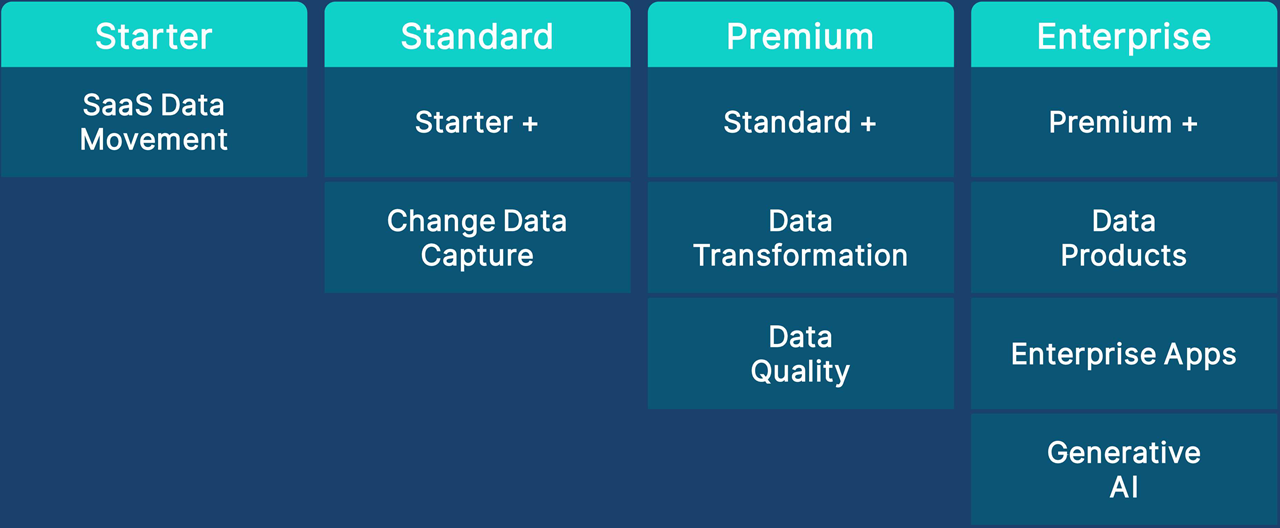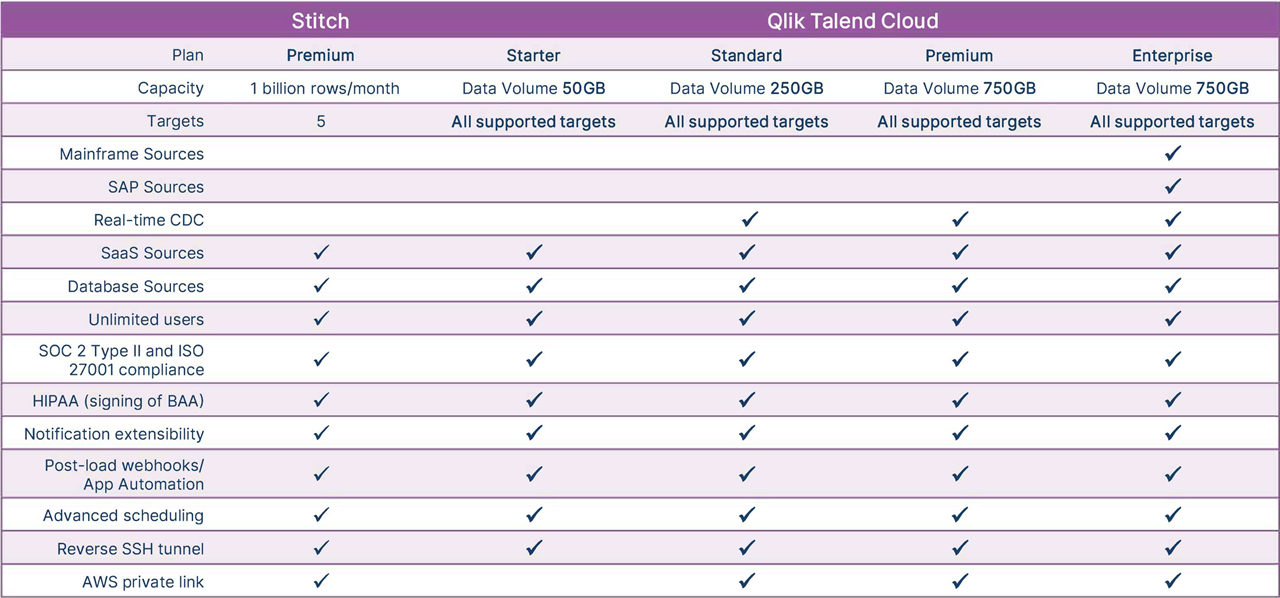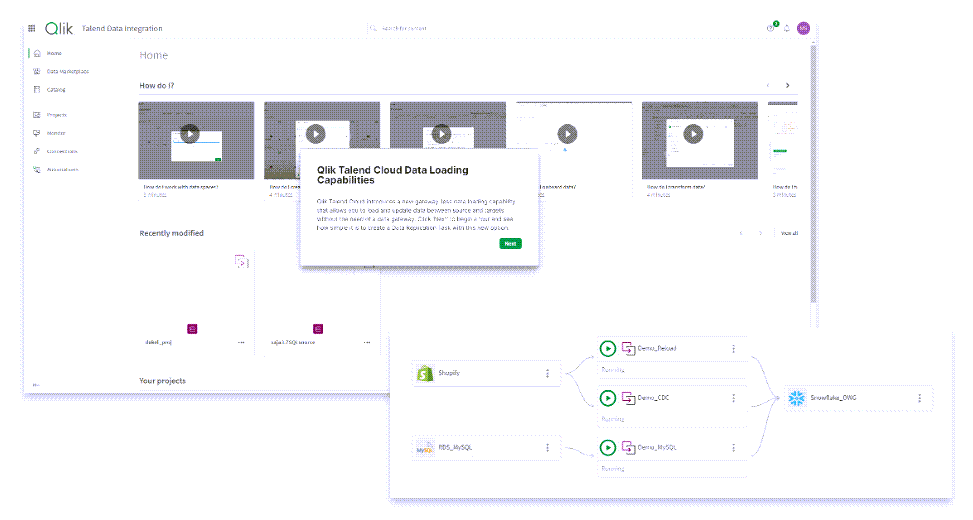About Qlik Talend Cloud subscriptions
Qlik Talend Cloud, built on Qlik Cloud infrastructure, combines Qlik and Talend Cloud capabilities into a single, comprehensive data integration, quality and governance solution. There are four editions of Qlik Talend Cloud: Starter, Standard, Premium, and Enterprise. The edition you choose determines the capabilities that you can access.
Data movement, is available in all editions. However, this guide focuses on Qlik Talend Cloud Starter edition as it covers all the capabilities that are available with a Stitch Premium plan, and more.
The higher editions include all the capabilities of the previous edition and provide more advanced capabilities including additional data sources and complex transformations, as well as governance, AI, and deployment capabilities. As an additional benefit, all editions include default analytics capabilities in Qlik Cloud with 25 GB capacity.
The following high-level overview describes the main capabilities with each Qlik Talend Cloud edition.
Overview of Qlik Talend Cloud editions

Review the following table to compare the capabilities in Stitch Premium with those in Qlik Talend Cloud. For a more comprehensive comparison of the two platforms, see Technical feature comparison.
Capabilities in Stitch and Qlik Talend Cloud by edition

For more information about Qlik Talend Cloud subscriptions, see Qlik Talend Cloud subscription options and Qlik Talend Cloud feature comparison by subscription tier.
Qlik Talend Cloud Starter
Like Stitch, the Qlik Talend Cloud Starter edition of Qlik Talend Cloud, focuses on data movement. With this subscription, you can set up and run data replication tasks, moving data from multiple sources to your data warehouse with bulk or incremental loading. Using connectors available in Qlik Talend Cloud, you can connect to different sources and targets.
When you run a data movement task, data is moved from the selected source tables to the target platform. You can apply data changes to keep the target tables up-to-date with any changes made to the source tables.
While data is in transit, you can normalize data by configuring row-level transformation rules. Using these transformation rules, you can rename tables and columns, convert data types, drop columns, add columns, and replace data values using an expression. After you configure a replication task, you can easily schedule how often you want to load the data into your warehouse. You can also schedule your tasks to run at a specified frequency to ensure regular data updates.
To learn more about the Starter edition, watch the introduction video or take a tour of the platform.

Take a self-guided tour
See how easy it is to build simple, linear data replication tasks for leading cloud data platforms with Qlik Talend Cloud by following this self-guided tour.
Qlik Talend Cloud Starter edition
Data Moved
Qlik Talend Cloud subscriptions are capacity-based. You subscribe to a certain amount of capacity of usage for the chosen edition. Usage is measured based on a combination of metrics, depending on the edition, data volume moved, number of job executions and execution duration.
You can purchase data volume in Qlik Talend Cloud editions by capacity bands in blocks of gigabytes similar to a mobile phone subscription. This helps to provide predictability and manage your peak usage, and you always have the option to purchase additional capacity bands as required.
The Data Moved metric is the sum of all data moved to a target. You can move data to any type of target. The type of sources you can move data from depends on your subscription. Unlike in Stitch, there is no limit on the number of targets or sources.
Data Moved is measured from the beginning of the month. It is counted as it is landed on the target. This means that the same data replicated to two different targets is counted twice. The initial full load of new tables or files is free and is not counted.
The Data Moved volume is calculated as the number of rows in the dataset multiplied by the estimated row size. The estimated row size is calculated as the total size of all the columns in a row, based on the data type of each column.
For more details about the Data Moved metric, see Data Moved.
